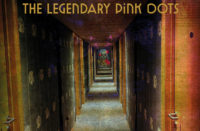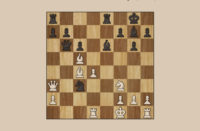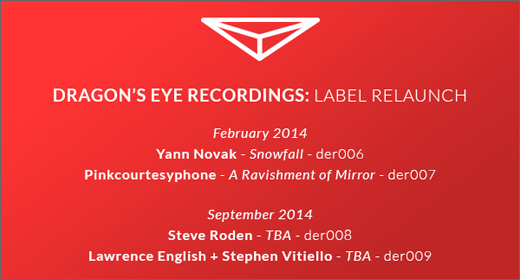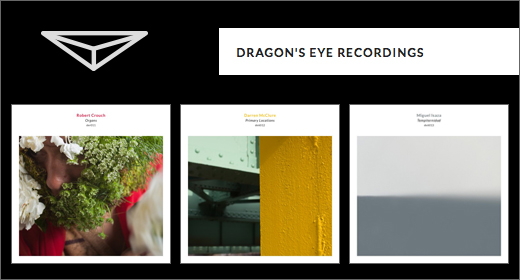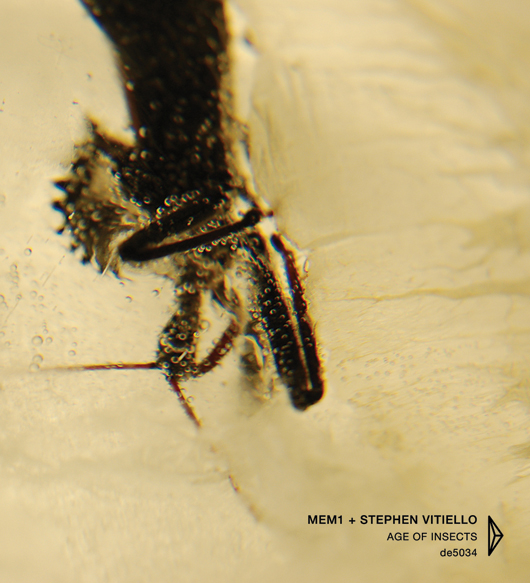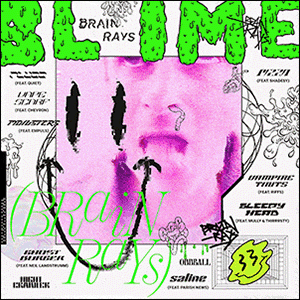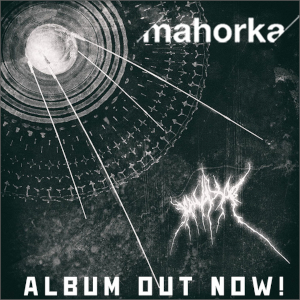A focus on the human side of artistic enterprise over narrow in-house style requirements has resulted in a catalogue that’s a veritable cornucopia of process and praxis. These six’s appeal lies in no small measure in the diversity and breadth of concept and sound – from the metaphysics of Celer and Blake Carrington to the psychogeographies of Simon Whetham and Robert Crouch, and the hermeneutics of Tomas Phillips / Jason Bivins and i8u.
 2011 finds Dragon’s Eye Recordings in rude health, judging by its level of release activity. Emissions from Yann Novak’s sound art bunker are more regular than ever, with no less than six offerings here. A focus on the human side of artistic enterprise over narrow in-house style requirements has resulted in a catalogue that’s a veritable cornucopia of process and praxis. These six’s appeal lies in no small measure in the diversity and breadth of concept and sound – from the metaphysics of Celer and Blake Carrington to the psychogeographies of Simon Whetham and Robert Crouch, and the hermeneutics of Tomas Phillips / Jason Bivins and i8u.
2011 finds Dragon’s Eye Recordings in rude health, judging by its level of release activity. Emissions from Yann Novak’s sound art bunker are more regular than ever, with no less than six offerings here. A focus on the human side of artistic enterprise over narrow in-house style requirements has resulted in a catalogue that’s a veritable cornucopia of process and praxis. These six’s appeal lies in no small measure in the diversity and breadth of concept and sound – from the metaphysics of Celer and Blake Carrington to the psychogeographies of Simon Whetham and Robert Crouch, and the hermeneutics of Tomas Phillips / Jason Bivins and i8u.
:::….:.:::….:::::::..:::::…..::..::::…::::.:.::::..:::…:::….:::.::::.:.::.:::.:::.:::…:::..::…::
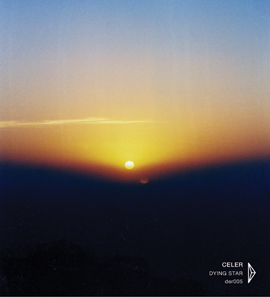
Dying Star finds Celer at their most sonically depleted, with only a vintage analogue synthesizer and a mixing board – all field recordings, bells and bows, and string-driven things removed. Further compounding this unwonted parsimony of means, it was entirely improvised, with no post-processing intervention from Will and Dani. The depletion is willed (pun intended), a subtle purpose evident in this, for what transpires is possessed of a fragility suggestive of impermanence, an attenuation redolent of mortality. Dying Star sets out in the softest of synth tones, hovering, wavering gently, subsequently adopting approximations to instrument voicings (organ, strings) in liminal rise-fall swell-relent cadences. After slowly hoving into ear-view, each part slowly wanes, barely making its presence felt enough to be said to have waxed, before ceding to the next. Its eventlessness is deceptive, though, for emergent strata are discernible on digging deeper; here a dimming, there a lightening of timbre – maybe an overtone or a tintinnabulation; as in “On the Edges of Each Season” (clip below), which nurtures the formation of a tonal cluster and lower end promptings. And the gradual waning occurring as each piece reaches closure is a notable leitmotif – a thing of great delicacy, an evacuated beauty purposively recurring so that a faraway starburst at the start of the closing “Flickers (Goodnight)” incides with all the more resonance. The likes of Discourses of the Withered and Engaged Touches, with their widescreen ambient and neo-symphonic lushness, are a far cry from this discreet music of miniatures, of ebb and flow of subdued wave forms. Yet the album gradually works its lowlight spell, its chronostatic scenes snaring a sense of the “completely pure and secluded” sought by Will Long, that “stands as a fading presentation of memory, time, and loss, set against the ending day.” [Listen | Purchase]
[audio:http://igloomag.com/wp/wp-content/uploads/2011/04/Celer-On-The-Edges-Of-Each-Season.mp3|titles=Celer – On The Edges Of Each Season]:::….:.:::….:::::::..:::::…..::..::::…::::.:.::::..:::…:::….:::.::::.:.::.:::.:::.:::…:::..::…::

Blau is a first collaboration between Tomas Phillips and Jason Bivins. Phillips has collaborated with Francisco López and i8u (whose DE release is reviewed later here), and released on the likes of Trente Oiseaux and Line, while Bivins is a guitarist hitherto more at home in improv groups. Press blurb further references Barnett Newman, a painter whose images of solid colours cut by vertical lines – one of which illustrates Blau – reveal a preoccupation with minimalist imagery evidently shared by and inspiring of this blue-some twosome. Phillips’ colours the musical canvas with restrained digital frequencies – dronal flickers switched through Max/MSP algorithmic shifts. Into this soundpool runs an analogue outflow of Bivins’ favoured flotsam – of caustic string scuzz, jackplug buzz and feedback hum. Here you won’t find the laptopped squishings of a Fennesz, but a flaunting of the instrument’s raw stringy steeliness. Blau is a shifting genre stew of abstract minimalism and improv, ambient and lowercase, doubtless inspired by the pair’s urge to make their two worlds collude rather than collide. To these ears, they make at times uncomfy bedfellows, as if a couple used to separate sonic rooms were seeking to accommodate to twin beds, or indeed a double, reconciling their timbral differences. The album plays out in five uneasy pieces, of which “Ohne Titel 3” (clip below) is perhaps the best; it surges from rustle to roar in a deeper minimal fusion whose guitar grit and software skittish end up falling within unwonted frequencies for the ear-worn drone-mainliner, reminding strangely of a post-digital Main. With forms veering between abstract and figurative, viscous feedback seepage ceding to soft and luminous oscillations, Blau has about it, sometimes, a certain something, but not nearly often enough. [Listen | Purchase]
[audio:http://igloomag.com/wp/wp-content/uploads/2011/04/Tomas-Phillips-Jason-Bivins-Ohne-Titel-3.mp3|titles=Tomas Phillips & Jason Bivins – Ohne Titel 3]:::….:.:::….:::::::..:::::…..::..::::…::::.:.::::..:::…:::….:::.::::.:.::.:::.:::.:::…:::..::…::
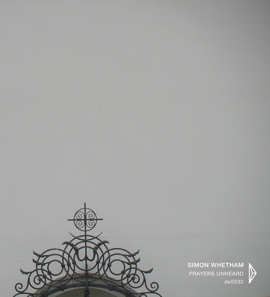
Bristol sound artist Simon Whetham‘s extensive CV bespeaks years of sound auscultation, a questing mike that’s surveyed sundry fields, issuing in sound installations, exhibitions, workshops, and releases on entr’acte, Con-v, Lens, Gruenrekorder, and Trente Oiseaux. In preparation for a performance in Krakow, he recorded sounds in the old Jewish area of Kazimierz that became a ghetto under Nazi occupation – sounds which then became the base material for a programmatic work on the place. Expressed as research, Whetham’s enquiry would be a study of how the sounds of the locale operate as bearers of the residual horror of the Shoah – an audio exploration of the presenting past. The eponymous Prayers Unheard are those of those Krakowians who thought their God would save them, an imprint of these, along with their suffering, long since faded, perhaps still permeating the city’s structures. Whetham’s method is his customary mix of field recordings with granular synthesis and spatial sound treatments. Some impressions: “Part First (An uncertain Distance)” is suggestive of a kind of arrival – muffled environmental sounds, discreetly treated, engine rumble, rails, PA effluvia; below dark rumblings, above a static patina; emergent traces of musical theme of plangent portent then curtailed with disjunctive crackle. “Part Second (Paths, crossing)” (clip below) deploys organ-like drones, accruing a melancholic solemnity, the sound of birds and other minutiae, great plains of rumble and static. Signifiers of the journey to nearby Auschwitz ensue – muffled voices, machine clatter, tramping footsteps, train freight car doors; perhaps even a furnace is turned on. “Part third (The Chamber)” is an insistent discomfiting build up of minute gestures that intensifies until a slow fall inwards, a subtraction of sound signalling life receding; then the strains of an orchestra with a lone violin rising above, perhaps the last vestiges of the inextinguishable human spirit. Whetham’s work is ultimately sonically suggestive though its conceptual engagement is the hook, premised as it is on a psychogeographic notion that the sound of places resonates with the psychological endowment of the past, somehow spatio-temporally ingrained. [Listen | Purchase]
[soundcloud url=”http://api.soundcloud.com/tracks/8908280″ params=”show_comments=true&auto_play=false&color=000000″ width=”100%” height=”81″ ]
:::….:.:::….:::::::..:::::…..::..::::…::::.:.::::..:::…:::….:::.::::.:.::.:::.:::.:::…:::..::…::
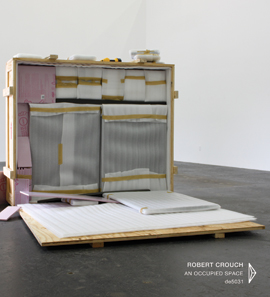
An Occupied Space is the debut full-length by LA’s Robert Crouch, taking as departure point field recordings of a public place to which music is integral. The space occupied here is emblematic of anywhere anonymous herds circulate in anodyne dreamworlds. Crouch’s fields were recorded with an added criterion: to capture not just the sound, but also the music of these spaces; the places his recorder was perched had music diffused by loudspeakers to let the essential sonic constituents colour the soundfield. The work seeks to be as much about music, its function in urban contexts, the way it lulls our anaesthetized consumer wanderings, as it is itself music. Each piece takes on the aspect of a sonic tableau vivant, albeit one to which the artist also contributes as shapeshifter. In fact, they’re far more musical than other releases here in that musical elements predominate, site-specific sounds rendered more as background texture. It’s made up of drone mists and manipulations which blur the listener’s trajectory, moving through an opaque pointillist fog pierced by odd noises off in the remote crowds and fragments of decayed consumer symphony dinned out by dull PAs. Little topographic residue is foregrounded on most of the tracks, save for some whirling detritus, even then barely identifiable, late in the day; most pieces articulate themselves as richly textured ambient drone tracts, as on “Firehouse II” (clip below) – a gorgeous piece of heavens-gaze reverie. Crouch channels a certain distillate of the alienated air of these familiar yet faceless spaces, but not with the cold clinical treatment one might expect, rather conferring a peculiar warmth and intimacy. Ultimately, there’s a sense of An Occupied Space being slightly spuriously conceptually situated – as a field-fueled assemblage masquerading as a pseudo-sociological document; it may be that the process aspects are somehow lost in translation, but the impression is of a collection of musically absorbing product – sculpted pieces in which field recordings are blended with electronic treatments into evocative interior landscapes. [Listen | Purchase]
[audio:http://igloomag.com/wp/wp-content/uploads/2011/04/Robert-Crouch-Firehouse-II.mp3|titles=Robert Crouch – Firehouse II]:::….:.:::….:::::::..:::::…..::..::::…::::.:.::::..:::…:::….:::.::::.:.::.:::.:::.:::…:::..::…::
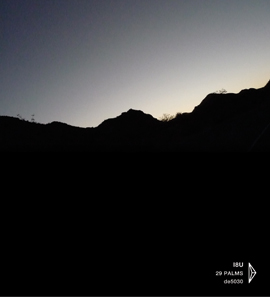
Montreal-based France Jobin has been active since 1999, with albums on labels like Bake/Staalplaat, Room40, Oral, Atak, and Vague Terrain. Specializing in “sound-sculpture” in her i8u guise, she’s aided and abetted here by California’s Joshua Tree national park, whence she drew both inspiration and field recordings, edited and processed into the spatial environments of 29 Palms. Its single long format tract eschews a linear narrative in favour of ineffable dwellings and unwonted divergences; for all that it dwells on spaces it creates, its audio-visualizations constantly shift, between deeply textured dronal swells and billows and attenuated higher end microsonics – binaries that Jobin stitches together into audio tableaux that are at once evacuated and replete, expansive and intimate. Poking discreetly into the interstices of lower spectrum digital and analogue tone, softly prodding pulses and held back bass gesture, the trajectory of 29 Palms describes a event horizon onto which microvariations hove into view; ambiguous atmospheres unfolding out of a seemingly infinitely creatively configurable trio of materials – synthetic sustain, wavering tonalities and digital crackle – that commingle with occasional emergent harmonics. It rises and falls, building into whirling dirges (clip below), softening to mid-range pulse, descending into spectral sound and liminal near silence. Appeal – no soundalike reference intended – will be to those who cherish the likes of Richard Chartier through to William Basinski, to the ear that cleaves to a certain desertification, and the expressivity of absence. [Listen | Purchase]
[audio:http://igloomag.com/wp/wp-content/uploads/2011/04/i8U-29-Palms-edit.mp3|titles=i8U – 29 Palms (edit)]:::….:.:::….:::::::..:::::…..::..::::…::::.:.::::..:::…:::….:::.::::.:.::.:::.:::.:::…:::..::…::

It would be hard to deny that the appeal of Blake Carrington’s Cathedral Scan is as much to do with its conceptual elegance as pure aural pleasure. It springs from an ambitious sound design conceit whereby architectural plans of Gothic cathedrals generate images scanned via a Max/MSP/Jitter software patch that extrapolates the scan, mapping vision-to-sound, and thence to tempo and timbre; it renders a particular musical simulation of each structure, each scan/plan akin to a score. Live, the material is rendered into an audio-visual performance, the album capturing edits from several such event in large churches. The artist mixes the direct software-generated signal with the cavernous resonance of the performance space (clip below). Performances of the work are, by all accounts, attended by a certain air of non-religious religiosity (see, e.g. the following link); all that quasi-ceremonial jazz – the aspect of the performer as priest, combined with the scans of cathedrals, the nature of the venue, and the music’s trance-cum-hymnal. It’s no ecstatic church replicant, but there’s a recursive quality at work that – like prayer intoning or church organ overtures – induces an altered state of rapt contemplation. Carrington’s purpose in fiddling with these history-freighted icons would seem to be something to do with exploring the articulation of the reverential, the transcendent, in times of fractured metanarratives – when the sacred is no longer universally but individually (or communally?) constructed. On a more mundane note, the tones do in fact at times seem modeled, somewhat obviously, on a church organ mimetic, while at others we find the kind of arpeggiating concatenations familiar from minimalism a la Glass, or Riley; in fact, it must be said that these are not always the kind of tones or textures one would choose (note: speaking here as a sometime musician); however, this being a meta-musical affair, there’s a certain suspension of musico-critical disbelief in light of Cathedral Scan‘s greater synaesthetic achievement. [Listen | Purchase]
:::….:.:::….:::::::..:::::…..::..::::…::::.:.::::..:::…:::….:::.::::.:.::.:::.:::.:::…:::..::…::
In closing, a quick heads-up to DE’s 5-year anniversary, more particularly its commemoration at the turn of 2011 with a free download compilation, Wood, showcasing their 2011 roster, incl. Messrs Carrington, Crouch, and Whetham, along with other new and unreleased works by Chubby Wolf, Mem1 + Stephen Vitiello, Mimosa|Moize, and Justin Varis.
All releases above are out now on Dragon’s Eye Recordings. [Listen | Purchase]







